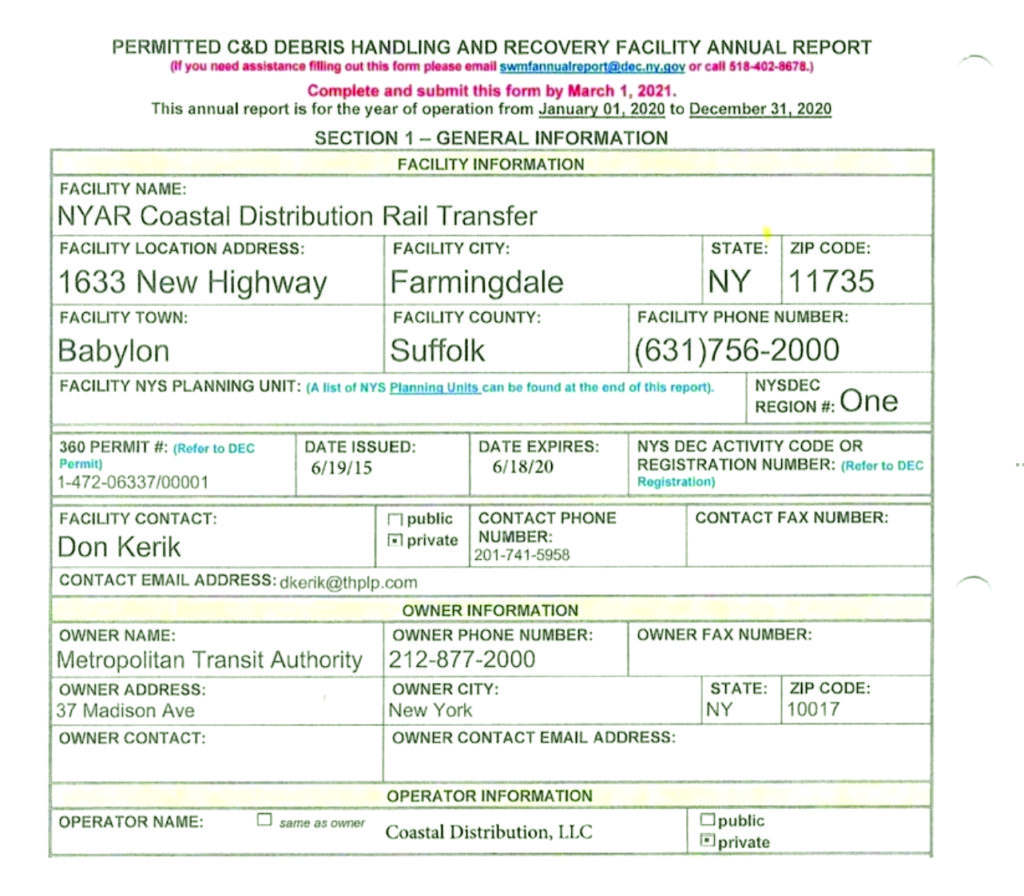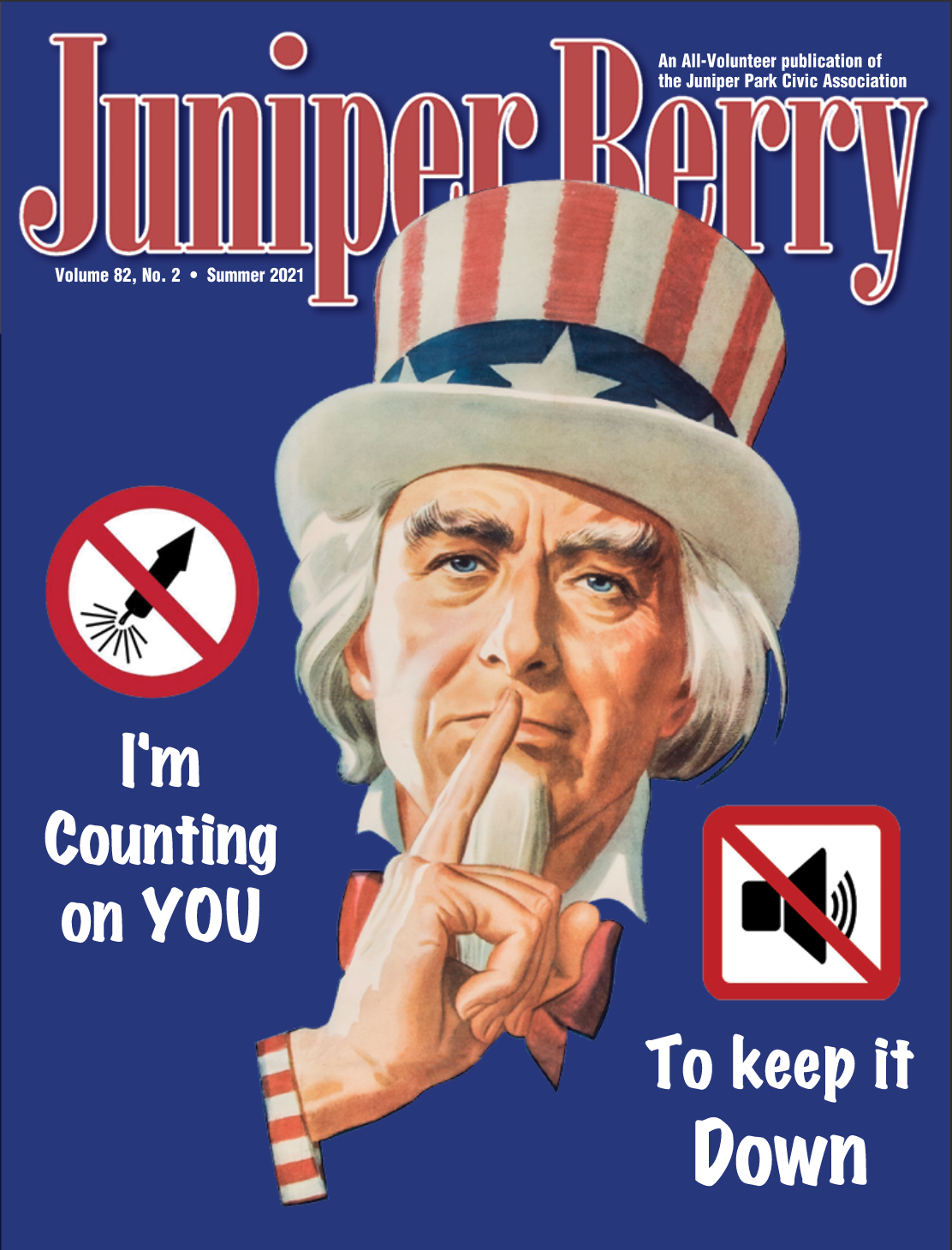Every year, day after day, New York City and Long Island transport their waste by rail — thousands and thousands of polluting rail cars and the high-polluting 1970s-era locomotives that haul them — through the same Queens neighborhoods. Luckily, there’s a $20 million budget and legislation to address this issue, and the technology to make it happen. So why is it being held up? The New York & Atlantic Railway and companies like Tunnel Hill Partners that operate waste-by-rail transfer and transload stations and landfills, are in this business together. The MTA is a silent partner in all NYC area waste-by-rail export because this business would not even exist without the waste-by-rail industry’s use of publicly owned and subsidized facilities, as this recent photograph of Tunnel Hill Partner’s sign in MTA-LIRR’s Farmingdale Yard shows.
The more tonnage companies export, the more money they make. And, while Zero Waste 2030 may be NYC’s goal, government is currently facilitating the industry’s growth. There is an additional $33 million in the NYC executive budget for waste export. NYC incentivized direct rail export of waste with increased tonnage limits in its new Waste Equity law, on which transfer stations in Queens Community District 12 are trying to capitalize. NYC excluded construction and demolition debris from the city’s new Commercial Waste Zone law. The map below shows how waste-by-rail is expanding in Suffolk County, supported by NYS Department of Environmental Conservation permitting. The US Department of Transportation’s Surface Transportation Board suggested in a recent ruling that Winters Brothers Waste Systems apply for a land-use exemption for its proposed waste-by-rail transfer station, which is served by its own railroad. This is a loophole the STB created to circumvent the Clean Railroads Act, which allows NYS to regulate transfer stations on railroad property. Waste-by-rail is seen as such a growth industry and good investment that Tunnel Hill Partners was acquired first by an Australian private equity firm and now waste giant Wheelabrator Technologies’ WIN Waste Innovations owns it. Recently the new Omni Brentwood Tunnel Hill Partners waste-by-rail transfer station received a permit from the NYS Department of Environmental Protection. Public officials and residents from Queens to Brentwood, NY strenuously objected to permitting the new facility, which is located in a state-identified Environmental Justice Community already overburdened with polluting facilities. However, none of these profitable companies have bothered to spend money modernizing the NYAR (New York & Atlantic Railway) Coastal Distribution facility or covering their garbage gondolas. So waste blowoff, leachate, and odors from uncovered Tunnel Hill Partners’ rail cars and their outmoded 3-sided building on MTA property harm public and environmental health and quality of life. The MTA-LIRR and NYS DEC haven’t stopped these abuses and harms, which have helped private owners get rich, even though this is all happening in a public right of way. An article about the private equity firm’s acquisition of Tunnel Hill Partners gave a glowing description of their “unique, difficult to replicate network of col-lection and transfer assets.” To put that more bluntly, NYS subsidizes this business to the detriment of their residents’ health and quality of life, and turns a blind eye to public harms:
Founded in 2008 by principals at American Infrastructure MLP Funds, Tunnel Hill has a major behind-the-scenes presence in the Northeast. The company has grown through multiple acquisitions, including the 2014 purchase of WCA Waste’s Northeast assets. For the 12-month period ending in June 30, 2018, revenues were reportedly $280 million.
With a footprint spanning from Ohio to Massachusetts, Moody’s described Tunnel Hill as benefiting from “a unique, difficult to replicate network of collection and transfer assets in a region that is experiencing sharply declining disposal/landfill capacity.” The Connecticut-based company now owns two Subtitle D landfills, 14 transfer stations (including many with rail capability), two recycling facilities, one beneficial use burial site and the collection company City Carting. The waste export industry likes to talk about how every rail car gets four trucks off the road without mentioning that these are not facilities where materials come in and go out exclusively by rail.
Truck-rail waste export transfer and transload stations in NYC and Long Island are served by lots of trucks.
The waste-by-rail industry and even NYS Department of Environmental Conservation have claimed that the public should accept this situation because they get trucks off the road. However, Civics United for Railroad Environmental Solutions recently analyzed public information in annual reports that NYAR Coastal Distribution is required to submit to the NYS Department of Environmental Conservation about where their tonnage comes from. What we discovered from NYAR Coastal Distribution’s 2018-2021 annual reports is that between 45% and 58% of their total annual tonnage of 400,000 to 475,000 tons was trucked there from NYC before being dumped and crushed in a rail car in MTA’s Farmingdale Yard in Suffolk County. Their reports also prominently feature the MTA as the owner.
The waste export industry likes to talk about how every rail car gets four trucks off the road without mention-ing that these are not facilities where materials come in and go out exclusively by rail. Truck-rail waste export transfer and transload stations in NYC and Long Island are served by lots of trucks. And their own reports tell us that it’s not just local truck traffic. Their business requires lots of trucks that travel back and forth on highways and bridges across the NYC region. The way this growing, lucrative industry operates creates unnecessary problems and costs for the NYC region and distant communities. Harms arise from outmoded, pol-luting transfer stations, truck traffic, high-polluting 1970s locomotives, and from landfills like Tunnel Hill Partners’ Sunny Farms, which has had problems controlling emissions of toxic hydrogen sulfide gas – a byproduct of decomposing gypsum. “Muffin top” loads of construction and demolition debris from NYAR Coastal have derailed on LIRR and Metro North tracks, disrupting commuter rail traffic. Derailed open rail cars from NYAR Coastal have dumped their contents beside tracks on Long Island, and in Ohio – where a CSX train carrying 109 loaded NYAR Coastal cars derailed. Most recently loaded C&D cars derailed on tracks east of Jamaica Yard, and LIRR was reported to need a crane from Pennsylvania to move them. So what can we do now? To create a more sustainable future and reduce the city’s waste export costs, please support Department of Sanitation programs by recycling and participating in curbside composting. Residential composting has the potential to directly remove more than 30% of the Municipal Solid Waste currently being exported by rail through Fresh Pond Yard now — at immense taxpayer expense and with many community burdens. Recently the Queens Solid Waste Advisory Board (QSWAB) was reconstituted by Queens Borough President Donovan Richards. Community Board 5 District Manager Gary Giordano and Civics United for Railroad Environmental Solutions are Board Members. The State of Waste in Queens report was published recently by the QSWAB Organizing Committee. See tinyurl.com/stateofwaste.
The problems discussed in this Juniper Berry article have been memorialized in the Waste Impacts Section of this report, including in the two Case Studies, and in the Waste Impacts Recommendations. Many more elected officials and residents are aware of these issues now, and are working on them. Please read the report and tell your elected officials you want corrective action: 1. pass legislation to cover the rail cars, and 2. make MTA-LIRR repower the locomotive New York & Atlantic Railway uses to Tier 4 Switcher standards (LIRR already has enough NYS appropriations to do it).




